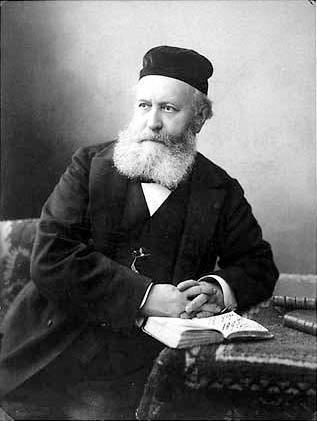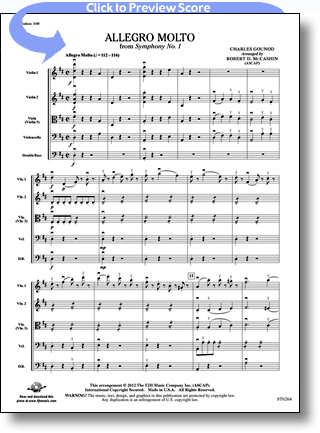Allegro molto -from Symphony No. 1
Product ID: FJ2 SO ST6264
By Charles Francis Gounod
Publisher:
FJH music
Arranger:
Strings
Series:
FJH String Orchestra
Genre:
Romantique
Line Up:
String Orchestra
Duration:
3:00
Level: 3.5
Set & Score
This item is in stock
About this item
Delightfully vivacious and full of character, this well crafted string arrangement is an ideal work to include either as a centerpiece or a closer for any concert. A fantastic way to introduce the work of a master composer while still offering a bit of variation in the classically inspired portion of your program.
Instrumentation
Strings
Reviews and rating
No review available, be the first to write one!

Composer
Charles Francis Gounod (1818-1893)

Charles-François Gounod (17 June 1818 – 17 October or 18 October 1893) was a French composer, known for his Ave Maria as well as his operas Faust and Roméo et Juliette.
Gounod was born in Paris, the son of a pianist mother and an artist father. His mother was his first piano teacher. Under her tutelage, Gounod first showed his musical talents. He entered the Paris Conservatoire, where he studied under Fromental Halévy and Pierre Zimmermann (he later married Zimmermann's daughter). In 1839, he won the Prix de Rome for his cantata Fernand. He was following his father; François-Louis Gounod (d. 1823) had won the second Prix de Rome in painting in 1783.
While in Italy, Gounod studied the music of Palestrina and other sacred works of the sixteenth century; these he never ceased to cherish. Around 1846-47 he gave serious consideration to joining the priesthood, but he changed his mind before actually taking holy orders, and went back to composition.
More info about the composer...



 Click above to view samples
Click above to view samples
